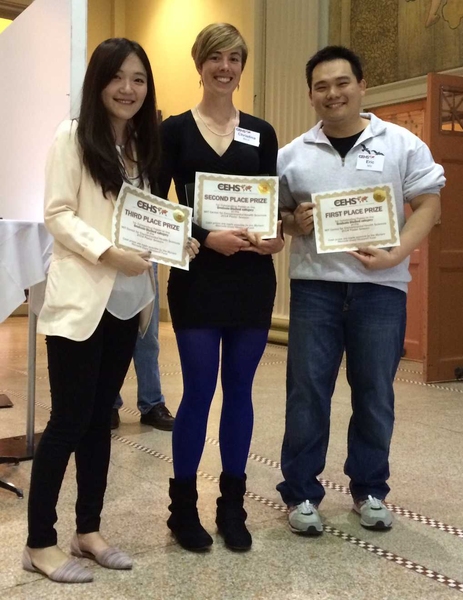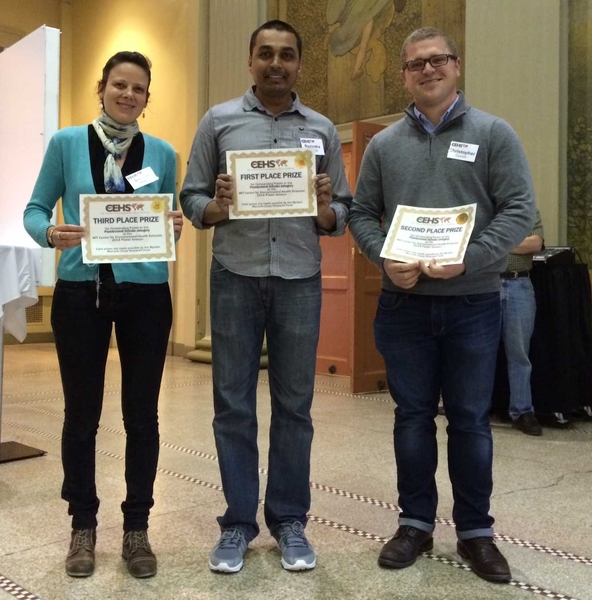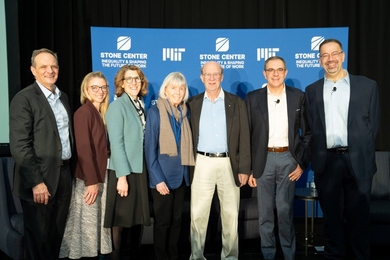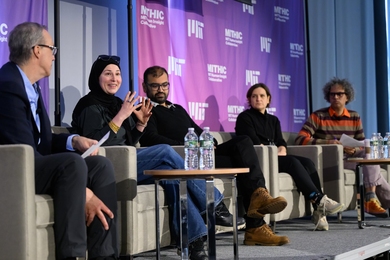The Center for Environmental Health Sciences (CEHS) at MIT held its annual poster session on May 9 at Morss Hall in the Walker Memorial Building. The session highlighted the work of the environmental health research communities of MIT and some of its sister institutions. Sixty posters were presented from the science and engineering labs affiliated with CEHS.
Cash prizes were awarded to graduate students and postdoc scholars for best poster presentations. For both categories, the prize for first place was $1,000, the second-place prize was $500, and the third-place prize was $200 and CEHS memorabilia. The cash prizes were made possible by the Myriam Marcelle Znaty Research Fund, which was established nearly 30 years ago to support the research of young scientists at MIT.
Eric Ma, a student in the lab of Jonathan Runstadler, an assistant professor of biological engineering, won first place in the graduate student category. Ma presented his work, “Development of Network-Based Methods for Identifying Reassortant Influenza Viruses.” In second place was Christina Birch, a student in the lab of Jacquin Niles, an associate professor biological engineering, who presented, “RNA Aptamers for Studying Pregnancy-Associated Malaria.” Finally, in third place was Jing Ge, a student in the lab of Bevin P. Engelward, an associate professor of biological engineering, who presented, “CometChip: Enabling Translation of DNA Damage and Repair Assays.”
In the postdoc scholar category, first place went to Ravindra Kodihalli of chemistry professor Steven R. Tannenbaum's lab, who presented, “Functional Proteomics of Matrix Metalloproteases in a Model of Osteoarthritis.” Second place went to Christopher Corzett, a postdoc in the lab of Martin F. Polz, a professor of civil and environmental engineering, who presented, “The Ecology of Algal Polysaccharide Degradation: Characterizing Novel Fucoidan-Degrading Bacteria.” And, finally, Simone Moser of assistant professor of chemistry Elizabeth M. Nolan’s lab, took third place for “Probing the Effects of Human Defensin 5 on E. Coli Using Microscopy and a Genetic Screening Approach.”
The CEHS has an overall mission to study the biological effects of exposure to environmental agents in order to understand, and predict, how such exposures affect human health. Moreover, by uncovering the chemical, biochemical, and genetic bases for environmental disease, the center aims to leverage that understanding to delay or even prevent the development of disease in human populations. To that end, the center brings together 35 MIT faculty members from a total of nine MIT departments (in both the School of Science and the School of Engineering) as well as two Harvard University faculty members — from the Harvard School of Public Health (HSPH) and Harvard Medical School's affiliated hospital, Massachusetts General Hospital.







